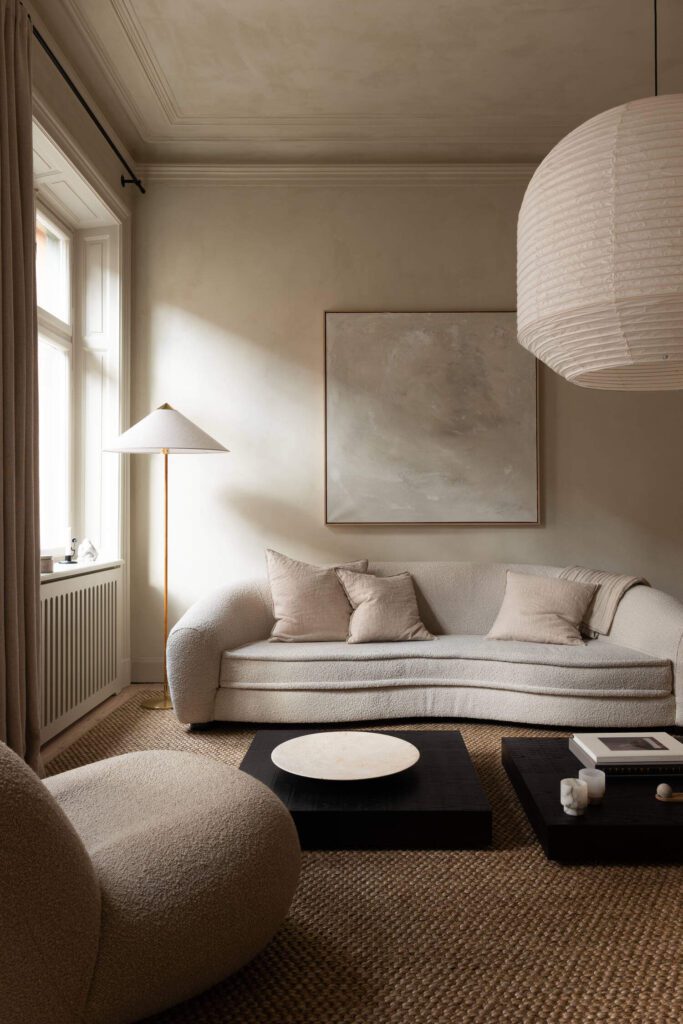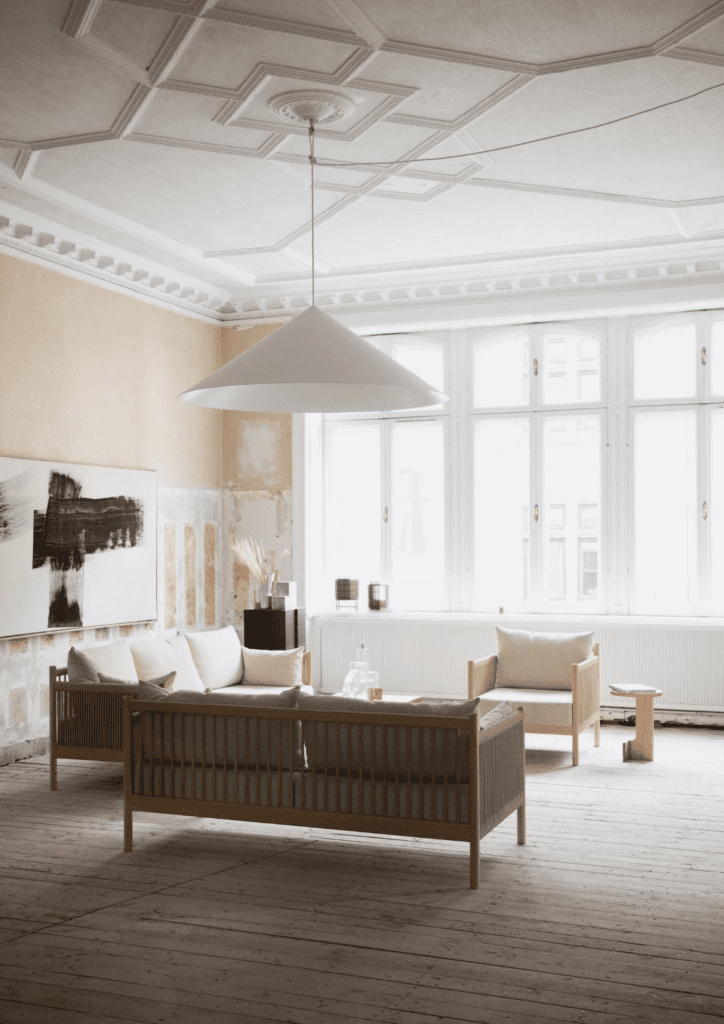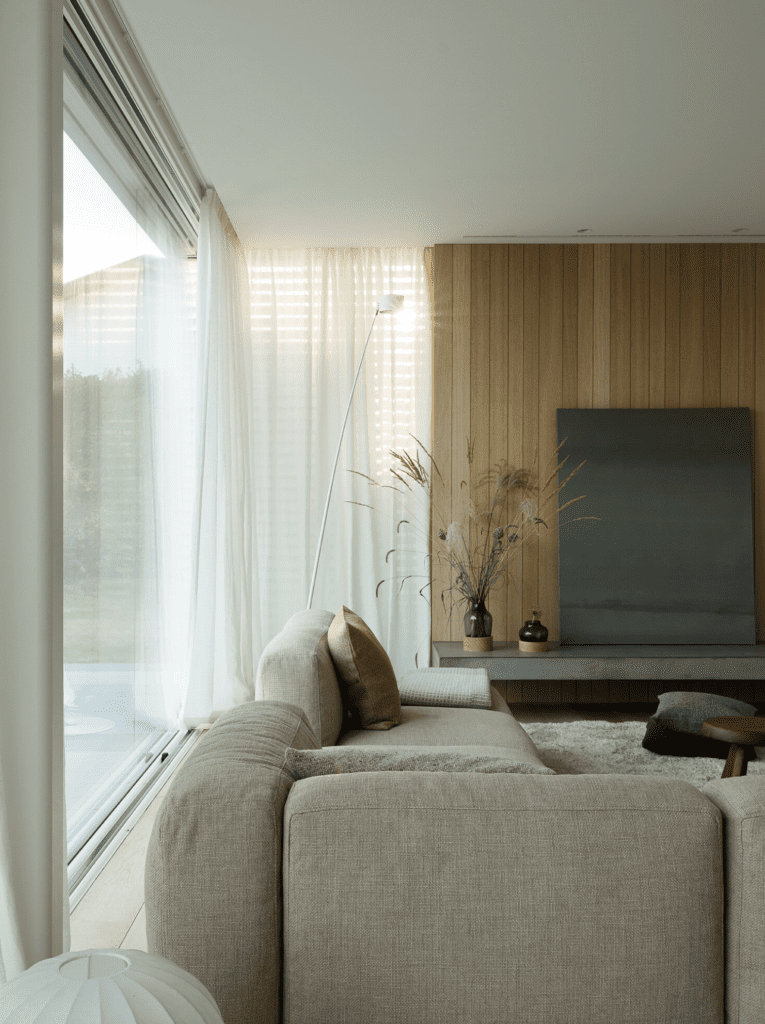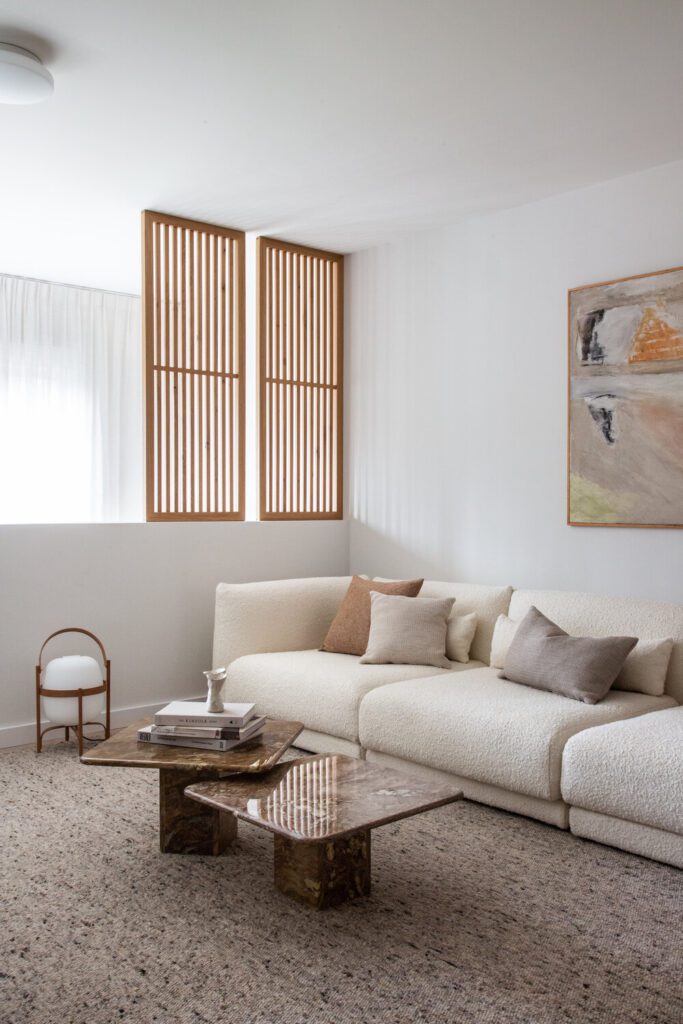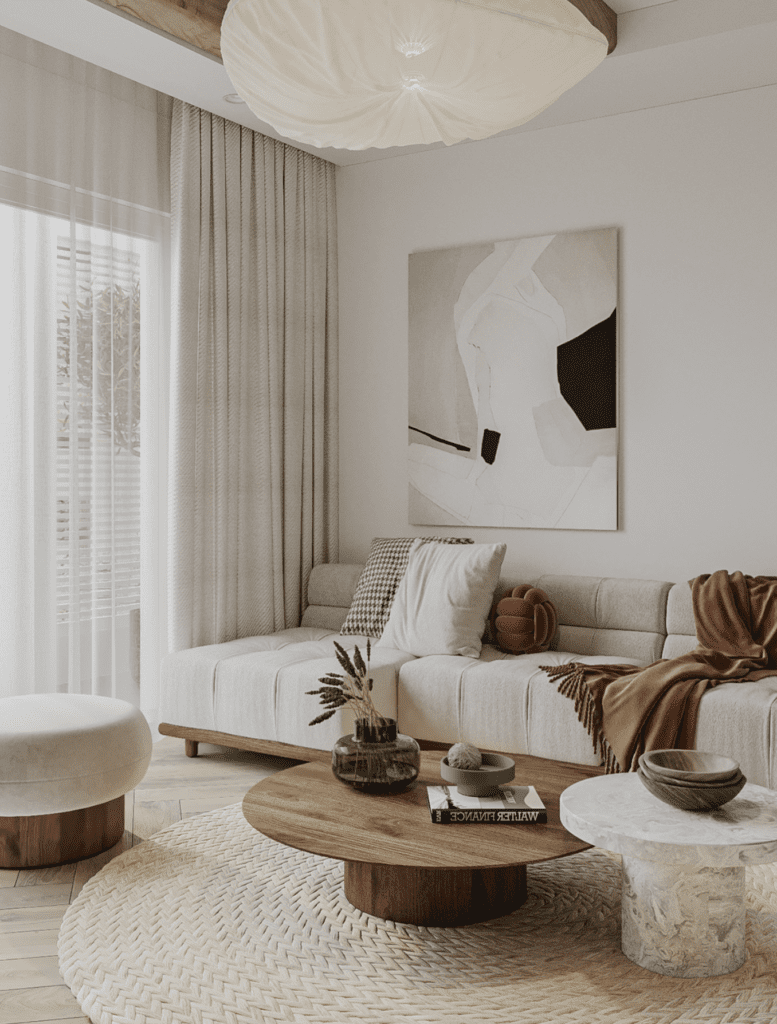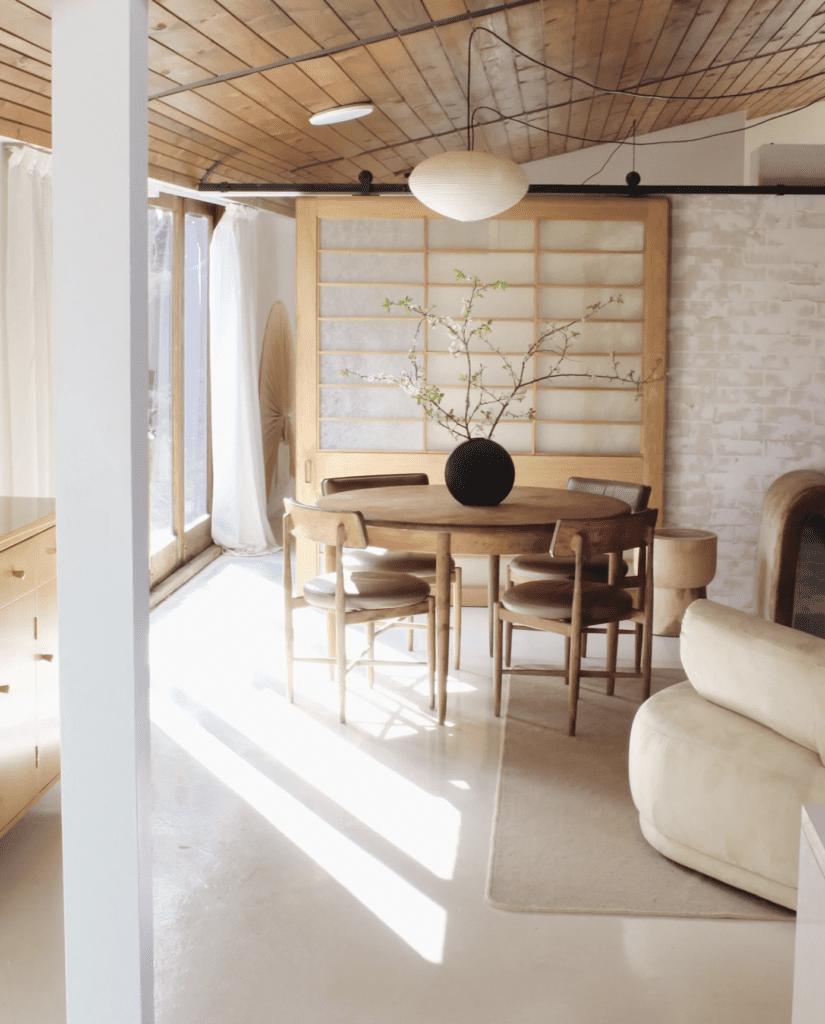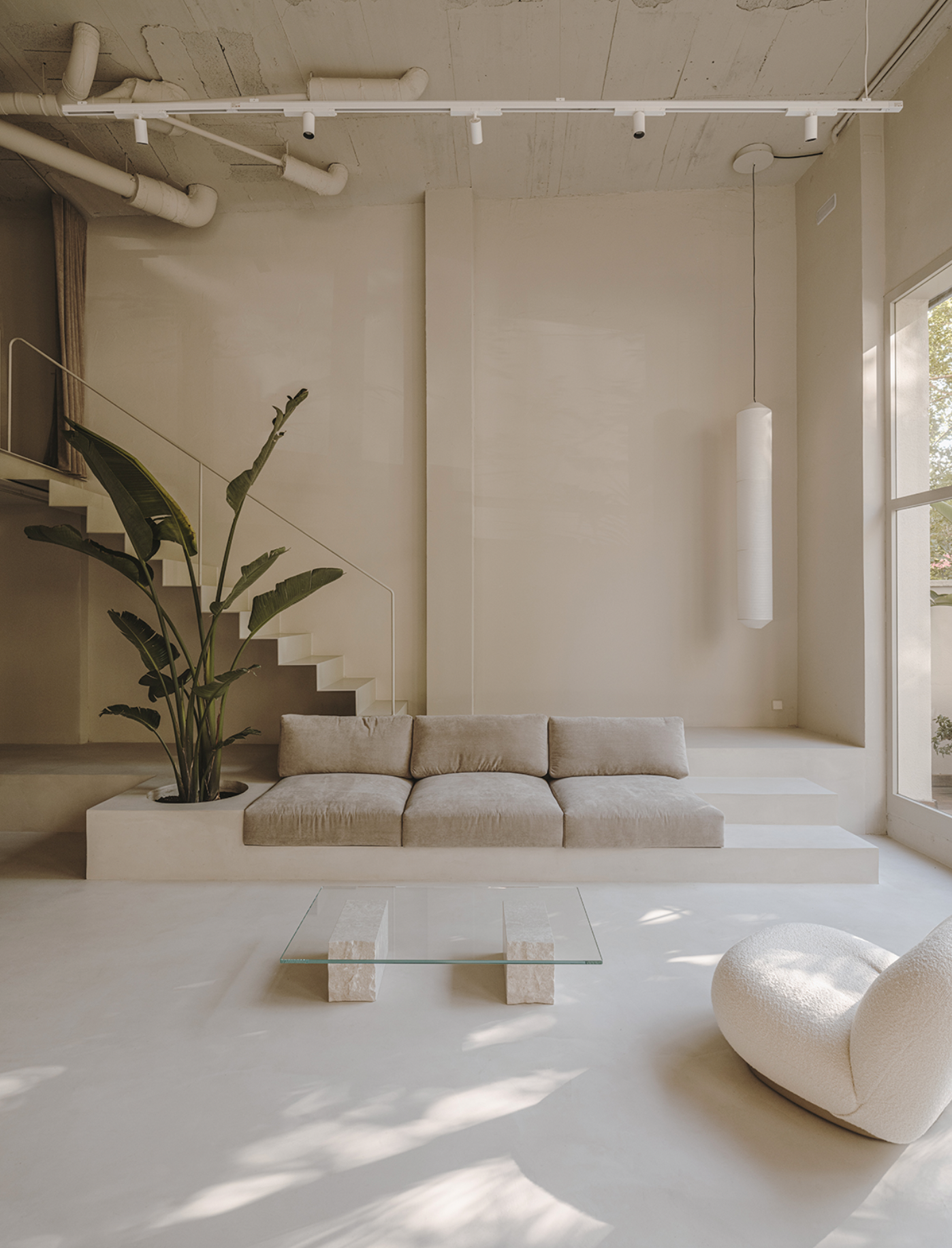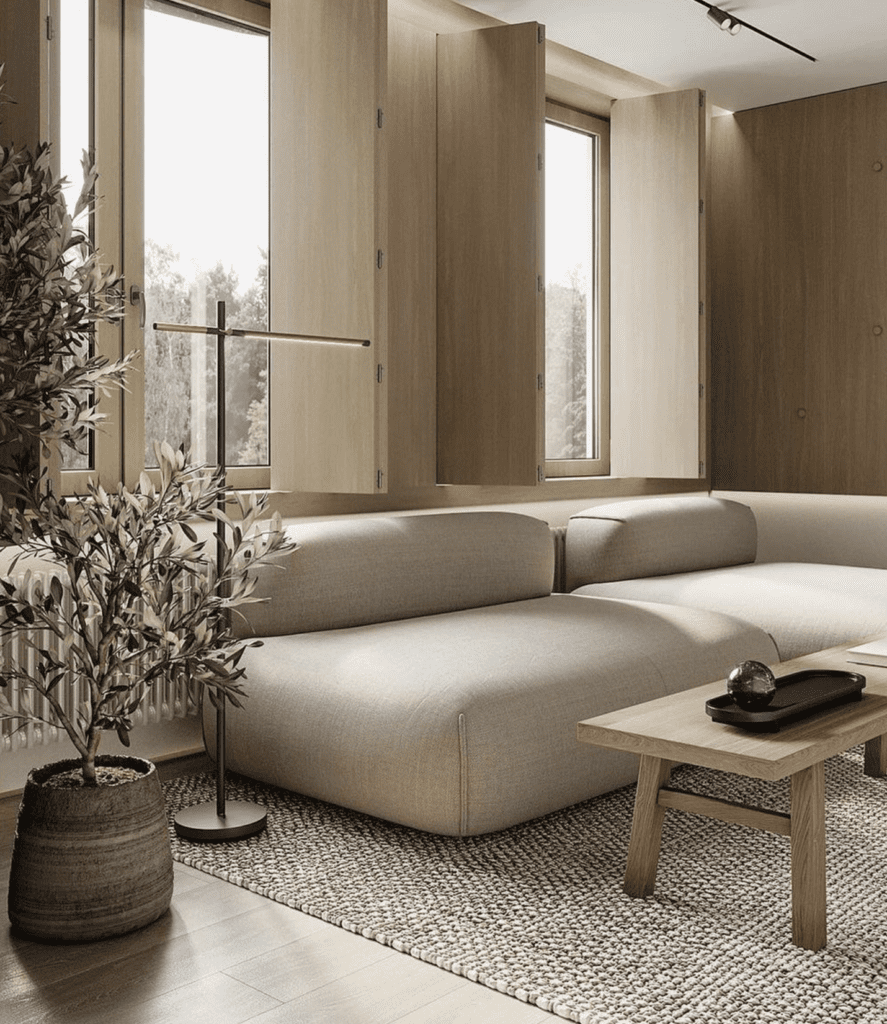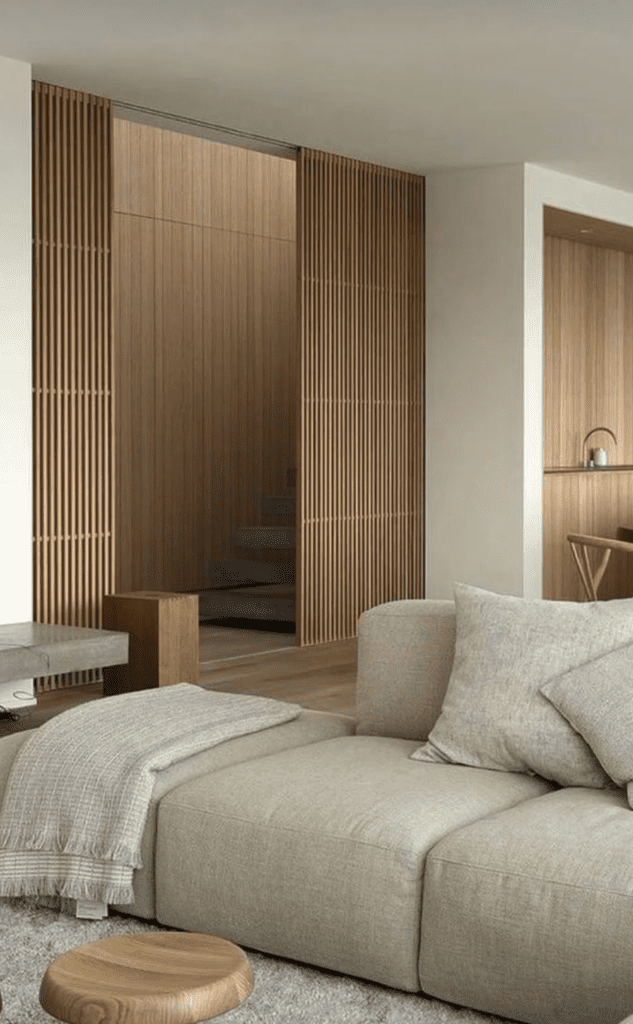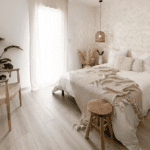
Image via Foyr
10 Ways to Create a Zen Home with a Japandi Living Room
This post is all about Japandi living room decor.
If you want to design a living room that exudes tranquility and comfort, Japandi interior design is right up your alley. Japandi style is the perfect fusion of coziness and clean minimalism. You can bask in the warmth of natural elements and homey decor while still keeping it simplistic and functional. Nothing embodies Zen more than a Japandi living room.
WHAT IS JAPANDI STYLE?
Japandi is the combination of Japanese and Scandinavian interior design.
Most Scandinavian design emphasizes hygge, the Danish concept of coziness and contentment. Hygge can be expressed in an interior space through various elements–plush textures, lit candles, warm color palettes, or fireplaces.
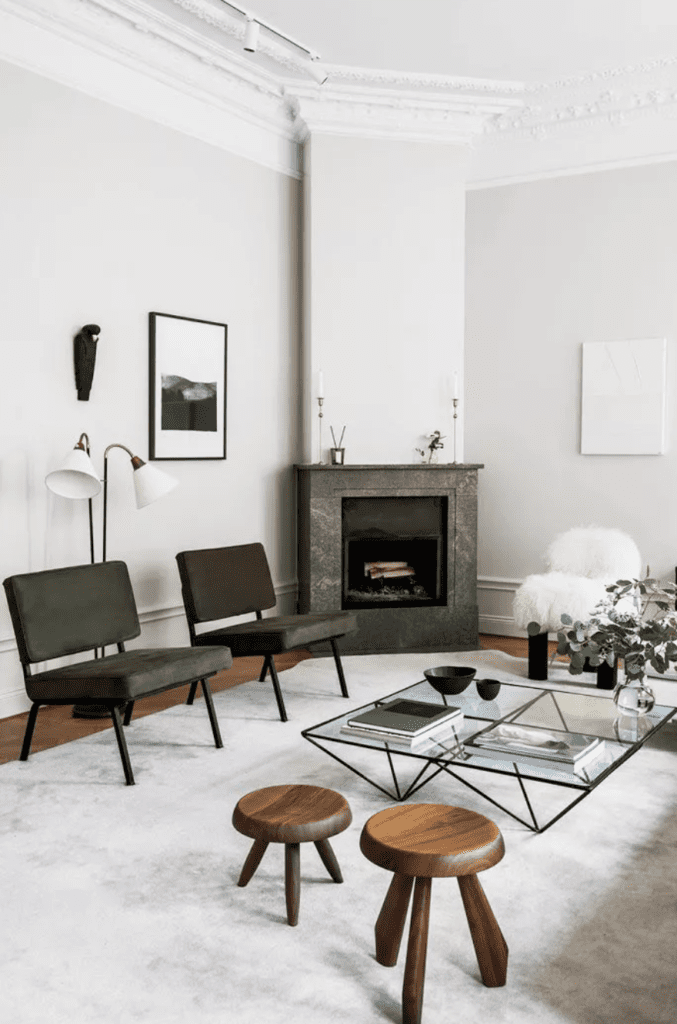
Japanese aesthetics focus on their own notion called wabi-sabi. This translates to the idea that there is beauty in imperfection, and that one should romanticize the simplicity and humility of everyday items and routine. This manifests in interior design through minimalism, functionality, and authenticity. In a Japanese-inspired home, you’ll find lots of decluttered spaces, repurposed furniture, asymmetry, and earthy colors.
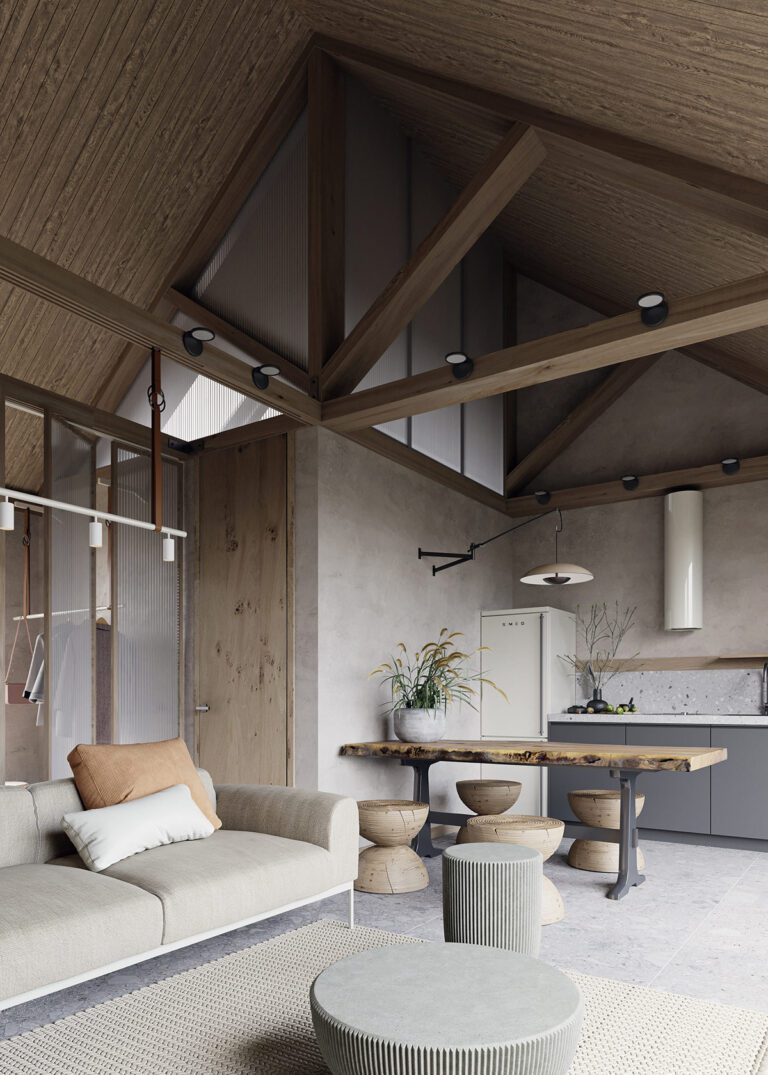
Japandi style balances right in the middle of hygge and wabi-sabi, bringing comfort and modesty together.

Here are 10 Ways To Create a Zen Home With A Japandi Living Room.
HOW TO INCORPORATE JAPANDI INTERIOR DESIGN INTO YOUR LIVING ROOM
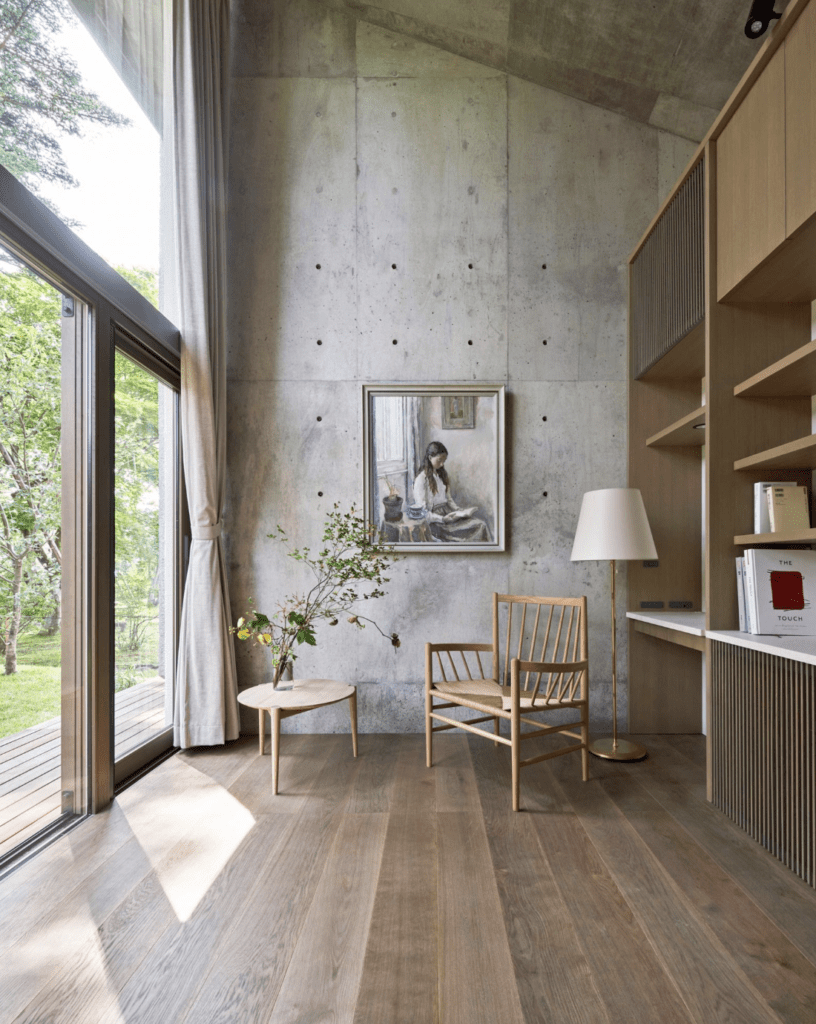
1. Use natural materials
Japandi style is characterized by sustainability, which can be emphasized through warm woods, wicker furniture, bamboo, clay, stone, and even concrete pieces. These unrefined, down-to-earth materials embody that feeling of humility and functionality that is essential to Japandi interior design.
If you need some inspiration for your Japandi living room space, try an organic teakwood coffee table or a rattan accent chair.
2. Restore old/broken items
Don’t throw away that cracked flower vase or faded leather chair–restoring broken or old items is actually a major component to Japandi style. Reupholstered or repurposed furniture pieces invigorate those feelings of comfortability, modesty, and minimalism.
You can also shop at vintage stores or thrift shops to hunt for handmade or reclaimed pieces.
3. Use few pieces of furniture
Less is more in a Japandi living room. Stick to the bare necessities like a couch, coffee table, and entertainment center. The open space and minimalism will feel cozy, clean, and organic. You can also go further with this tip by incorporating multi-purposed furniture pieces, such as this low-to-the-ground coffee table with stored stools for extra seating.
4. Neutral color palette
Japandi interior focuses on a neutral, muted color palette. Don’t stray from shades of grey, beige, black, white, and brown for the major design elements. This color combination will create a calming, earthy, Zen-like living space that emanates Japandi style.
5. Soft textures and fabrics
Using cozy textures and fabrics, like sherpa or cotton, nods to the Scandanavian roots of Japandi design. Adding subtle touches of coziness and softness to your living room space will bring out that necessary element of hygge. Japandi style can be very minimal and stripped, so cozy textures will highlight a more homey and comforting feel.
You can go all out with larger design pieces, like this plush couch from Rove Concepts. Or, you can infuse cozy fabrics through smaller touches, such as pillows and blankets. I’m in love with this ottoman from Poly & Bark, which can be used as a footrest, extra seating, or side table for your couch.
6. Blend in geometric shapes
The clean, smooth lines of geometric shapes blend seamlessly with Japandi style. Geometric shapes are also an easy way to add asymmetry and contrast to your living room. Minimalist art pieces with layered geometric shapes are very popular in Japandi spaces, especially as statement pieces. This will add focus and depth to your living room while maintaining a clean, simplistic aesthetic.
You can also blend and layer other unique shapes throughout the space, such as lighting fixtures, decorative knick-knacks, and mirrors.
7. Try a natural accent wall
If you don’t want your living room to feel too stagnant or flat, incorporate an accent wall with natural materials. A stone, white brick, or concrete accent wall will add a bit more variety and depth to your space, but still stay within the lines of minimalism and sustainability.
For example, these white pebble mosaic tiles have a textured, natural feel that can be installed with adhesive and grout. For an easier installation, you can also go with stick-and-peel wall tiles.
8. Keep it low to the ground
In addition to minimal furniture, keep your furniture low to the ground. Low-level furniture is a modern take on Japanese traditions, which involve sitting on mats on the floor for meals and relaxation. The low-to-the-ground look radiates a sense of serenity and peace, which is necessary for the everyday routines of life. It also embodies humility and a closeness with the earth, which is embedded in Japandi style.
9. Touches of nature
Greenery is also a large part of Japandi design elements. Nothing exudes earthiness and sustainability more than plants themselves. Add a few pops of nature around your Japandi living room, but still focus on minimalism. Bamboo, snake plants, and olive trees are common plants used in Japani spaces due to their clean, sleek lines.
10. Add room dividers
Japanese interior design often utilizers shoji dividers to create separation in an open plan space. Room dividers are also common in Japandi spaces, especially when made from natural materials. The divider will add dimension and texture to your living room.
This rattan room divider from City Furniture also has an organic, rounded shape that blends seamlessly with Japandi furniture.
I love Japandi style because it can be fused with other interior design styles. To create a japandi living room, you can lean into earthy and organic boho elements, go for a more minimalist look, or emphasize the mid-century modern warmth and functionality. Regardless of what you choose, your space will feel tranquil, cozy, and down-to-earth.
With these effortless tips, your living room will be transformed with Japandi style in no time.
THIS POST SHOWED YOU 10 WAYS TO CREATE A JAPANDI LIVING ROOM.
Some of the links in this article are affiliate links, meaning, at no additional cost to you, I will earn a commission if you click through and make a purchase. See our full disclaimer here.
